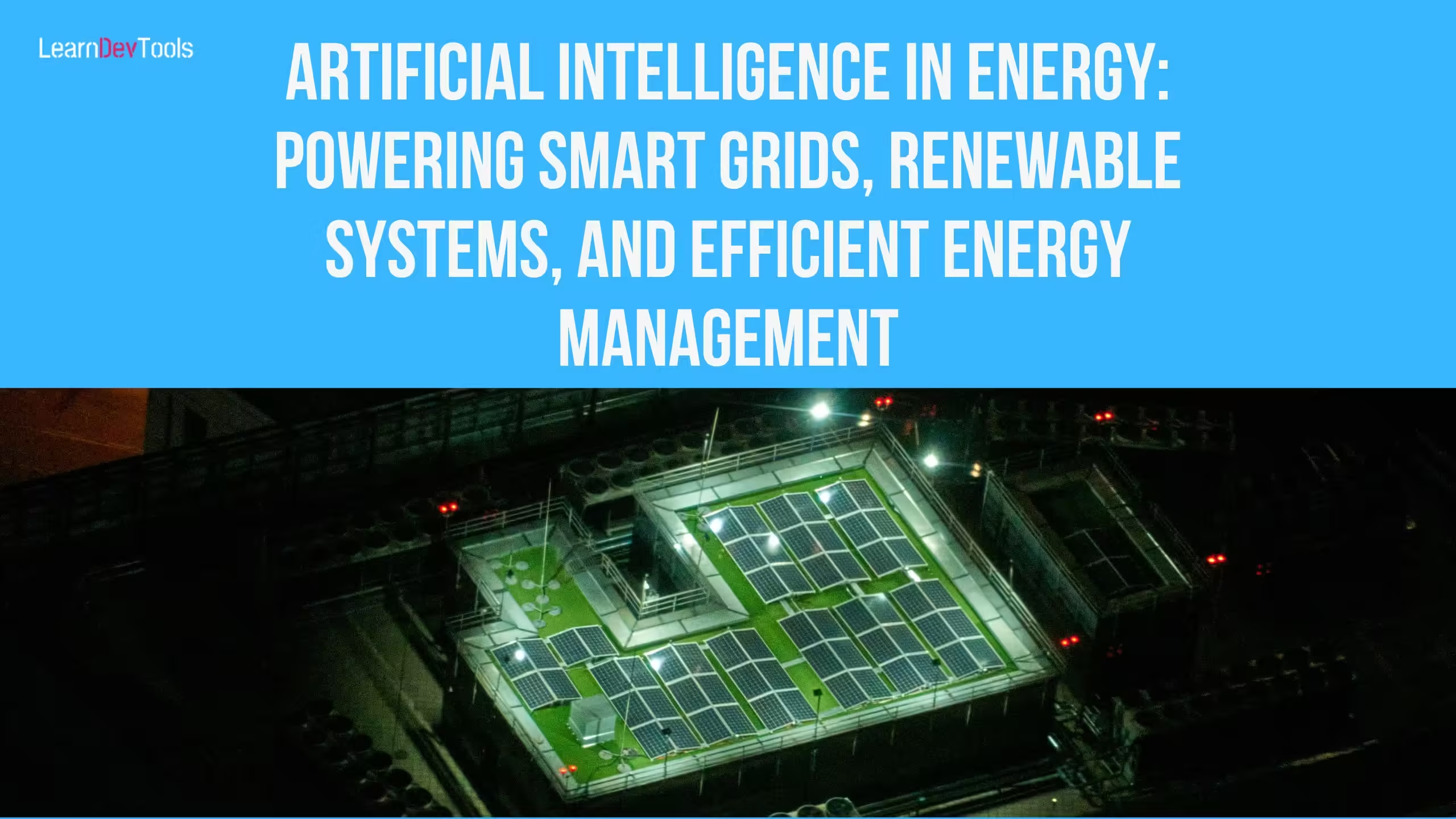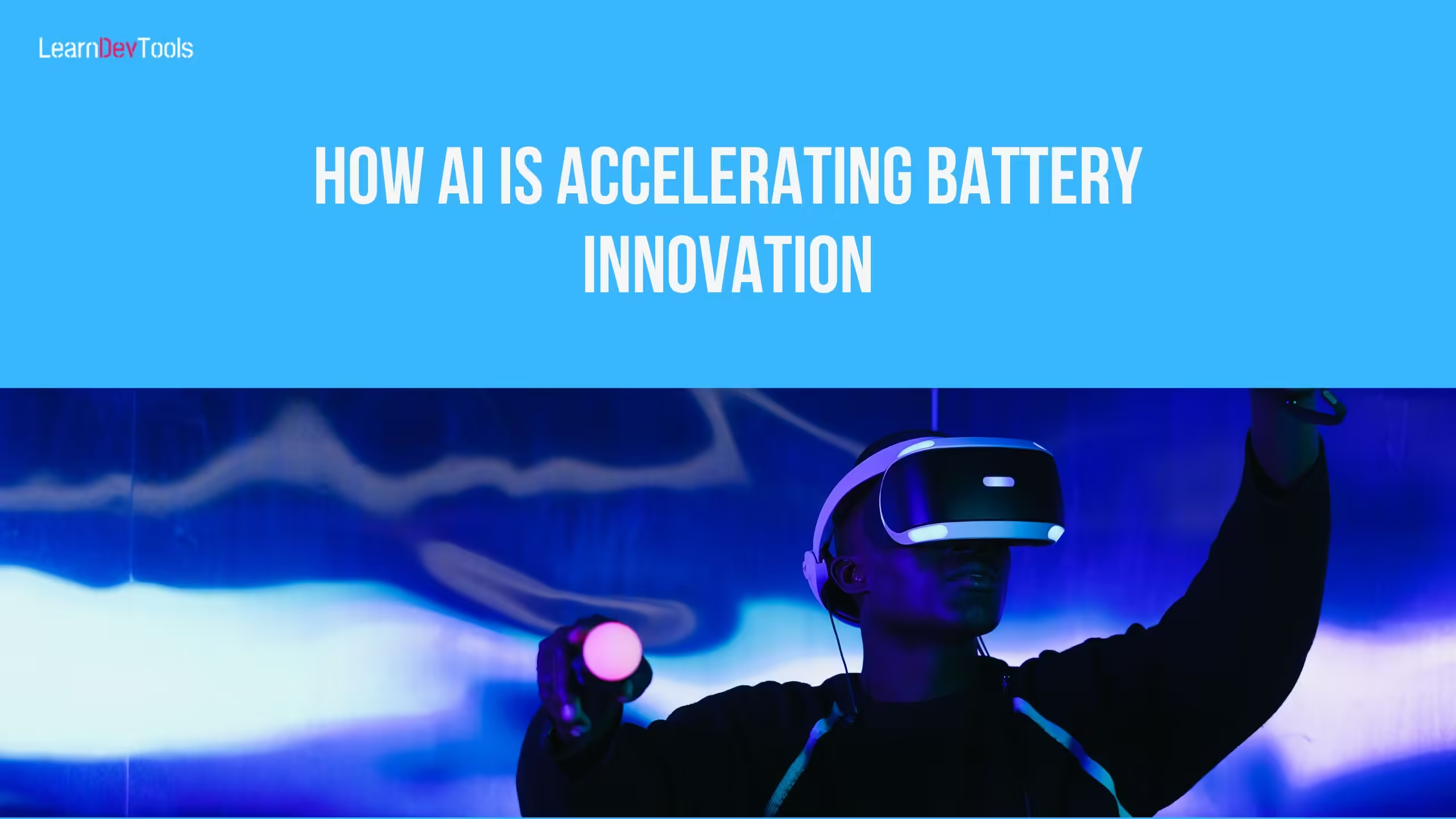As the global energy transition accelerates, so does the complexity of managing energy systems efficiently, sustainably, and in real time. Artificial intelligence in energy is emerging as one of the most transformative technologies to meet this challenge. From enhancing grid stability to optimizing renewable energy production, artificial intelligence in energy enables smarter operations across the power sector.
This article explores the growing role of artificial intelligence in energy, its applications in the power sector, renewable integration, smart grids, and energy management systems—and how it is fundamentally reshaping the global pursuit of a low-emission, resilient energy future.
What Is Artificial Intelligence in Energy?
Artificial intelligence in energy refers to the use of algorithms, machine learning models, and data analytics to automate, optimize, and forecast energy operations. Whether it’s wind turbines, solar panels, smart meters, or grid sensors—every device in a modern energy system generates data. Artificial intelligence in energy transforms that data into decisions.
By enabling systems to learn from patterns, anticipate failures, and adjust outputs, artificial intelligence in energy reduces waste, increases efficiency, and ensures reliable power delivery—especially when working with intermittent sources like wind and solar.
The traditional power sector is undergoing rapid modernization. Utilities are shifting from static, centralized models to more dynamic, distributed energy systems. Here, artificial intelligence in energy plays a crucial role in automating and stabilizing power infrastructure.
With sensors embedded across the power grid, artificial intelligence in energy can detect early signs of component wear, overheating transformers, or voltage drops. This form of predictive maintenance reduces costly outages and keeps operations smooth.
By analyzing historical consumption data, weather patterns, and behavioral trends, artificial intelligence in energy helps utilities forecast demand with higher precision—allowing better planning for peak loads and grid balancing.
AI power systems are now being used to autonomously reroute power, detect anomalies, and balance grid loads—all in real time. This automation improves grid reliability and reduces dependence on manual control.
AI in Renewable Energy Systems

The transition to renewable energy is a cornerstone of climate action, but integrating these variable sources remains technically challenging. Artificial intelligence in energy provides the intelligence layer needed to harmonize solar, wind, and storage into a consistent supply.
Accurate forecasting is essential to avoid grid instability. With AI for renewable energy, machine learning models digest satellite imagery, temperature, humidity, and irradiance data to forecast solar PV output. Similarly, wind turbines benefit from AI in renewable energy systems that factor in wind shear, turbine height, and topography to predict output fluctuations.
Beyond forecasting, artificial intelligence and renewable energy integration optimizes inverters, battery dispatch, and storage control. For instance, AI adjusts turbine blade angles or solar panel tilt in real-time to maximize exposure and efficiency. This is particularly effective in hybrid systems where solar, wind, and storage must work seamlessly.
Incorporating AI for green energy into site-level energy management ensures maximum generation with minimum waste—empowering operators to meet production targets while preserving assets.
Smart Grid Artificial Intelligence
The electrical grid is evolving from a centralized utility model to a distributed network of interconnected producers and consumers. Smart grid artificial intelligence enables this transition by delivering intelligence, automation, and security.
Today’s smart grids collect massive volumes of data from IoT-enabled devices like smart meters, voltage sensors, and grid-edge controllers. Using artificial intelligence in energy, these grids analyze data in real time to detect anomalies, reroute power, and manage distributed energy resources (DERs).
Artificial intelligence in energy also empowers dynamic load shaping through demand response strategies. During peak times, smart grid artificial intelligence coordinates with appliances, EV chargers, and industrial systems to delay or reduce consumption.
With increasing digitization comes increased vulnerability. Artificial intelligence in energy helps secure smart grids by monitoring communication patterns, identifying suspicious activity, and isolating potential breaches. This AI-enabled defense is critical to protect power systems from evolving threats.
AI-Based Energy Management Systems (EMS)

Facilities that rely heavily on power—like hospitals, data centers, and manufacturing plants—need more than just energy. They need intelligent control. That’s where an AI-based energy management system (EMS) makes all the difference.
In industrial settings, artificial intelligence in energy enables factories to automatically adjust machinery based on real-time electricity prices or grid demand. For example, a plant might delay non-essential production to off-peak hours, driven by insights from its EMS.
An AI-based energy management system collects data from equipment, climate controls, lighting, and energy storage devices. It uses predictive models to anticipate energy needs, avoid overuse penalties, and reduce total energy spend—all in real time.
In commercial buildings and smart cities, EMS platforms powered by artificial intelligence in energy integrate with building management systems to control HVAC, lighting, elevators, and solar arrays. They adjust settings based on occupancy, weather forecasts, and utility signals.
With rising ESG pressures, organizations must track and report energy consumption and emissions. AI for energy management helps generate reports, ensure compliance, and even simulate how policy changes might affect costs or carbon footprints.
Use of AI in the Energy Sector: Case Studies
Across the globe, artificial intelligence in energy is moving from theory to impact. Here are real-world examples of the technology in action:
A European smart grid operator uses artificial intelligence in energy to optimize energy trading and grid response during weather-related events, avoiding blackouts.
In remote communities, smart microgrids powered by artificial intelligence in energy deliver clean, stable electricity—automatically managing solar generation, battery usage, and diesel backup.
Utilities in wildfire-prone areas now use AI-powered drones for infrastructure inspection. These drones use artificial intelligence in energy to detect vegetation risks and asset fatigue.
AI and Renewable Energy: Accelerating the Net-Zero Transition
The global push for decarbonization hinges on the success of renewables. But the challenge lies not just in building them—but managing them. That’s where AI and renewable energy converge.
Artificial intelligence in energy makes it possible to maximize every kilowatt-hour of clean energy, seamlessly connect solar, wind, and hydro to the grid, and optimize hybrid systems like wind + storage or solar + diesel.
Through these integrations, artificial intelligence in energy is a cornerstone of net-zero roadmaps and ESG (Environmental, Social, and Governance) strategies.
Artificial Intelligence in Energy and Utilities: Looking Ahead
As utilities digitize and decentralize, artificial intelligence in energy and utilities will play a deeper strategic role.
Digital twins will replicate entire grid environments for simulation and training.
Federated AI will allow training across decentralized data sources, preserving privacy.
Explainable AI will increase trust and adoption by making decisions transparent.
Governments are now drafting AI-energy regulations to ensure ethics, privacy, and sustainability go hand in hand with innovation.
Conclusion
Artificial intelligence in energy isn’t just a buzzword—it’s a transformative force reshaping how we generate, distribute, and consume electricity. From AI power systems to AI-based energy management systems, from smart grid artificial intelligence to AI for renewable energy, the applications are vast and growing.
By deploying artificial intelligence in energy, we unlock real-time intelligence, lower emissions, and a pathway to smarter, greener, and more resilient energy infrastructure.
The future of energy is not just clean—it’s intelligent. And it’s already here.








